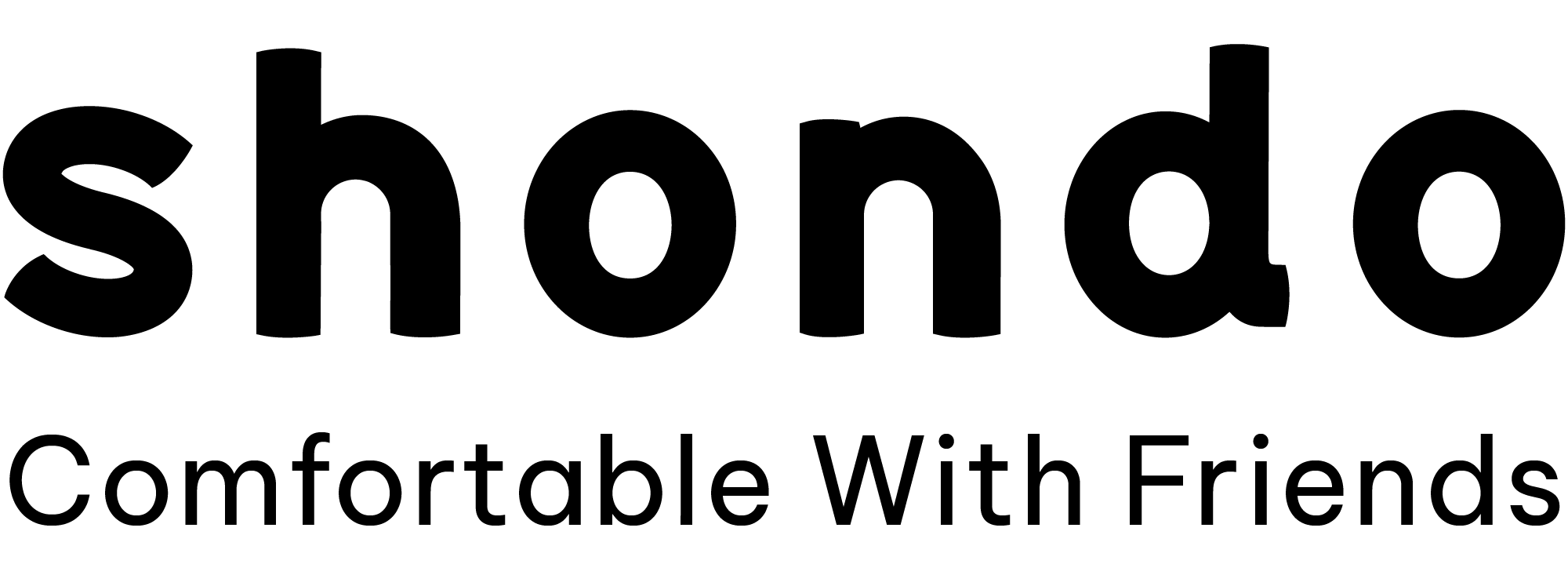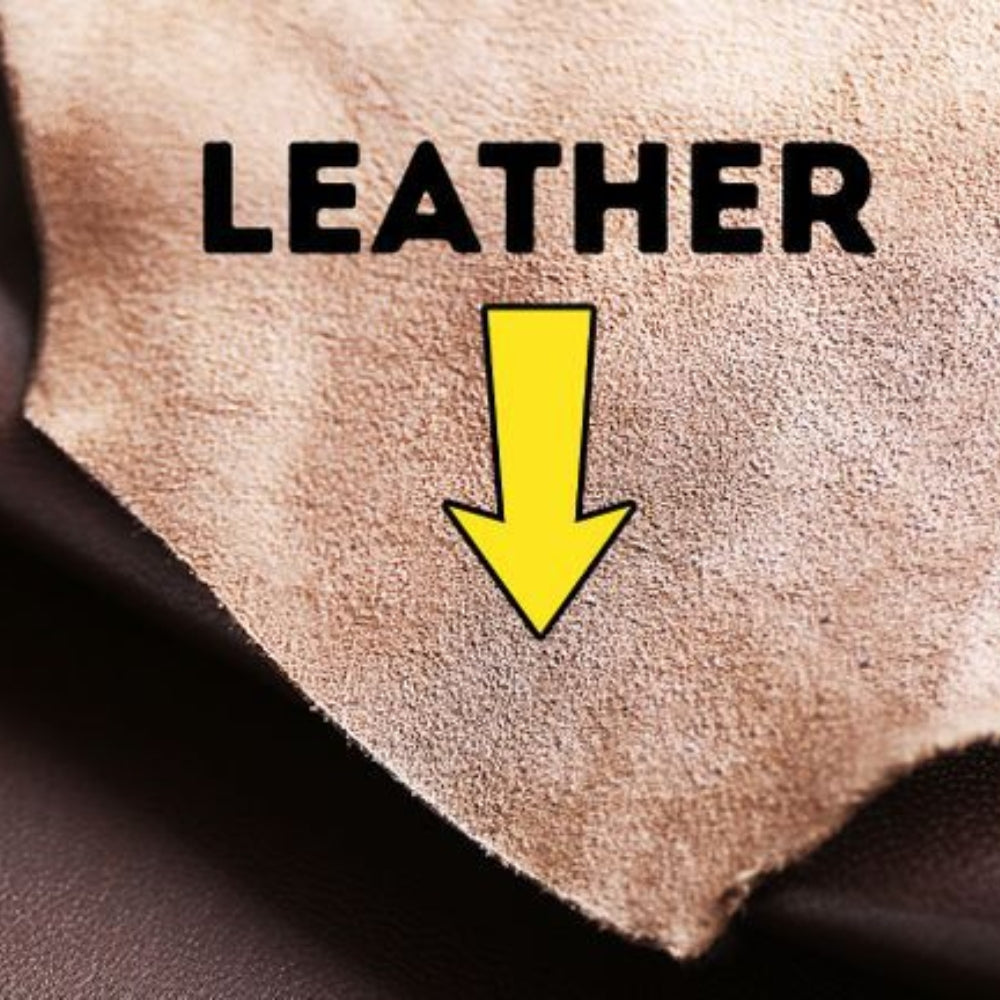Leather - leather has long been known as a high-class material, bringing luxurious beauty and outstanding durability. So what is leather , let's explore with Shondo in this article!
1. What is Leather?
The term leather is often used to refer to genuine leather - a natural material derived from animal skin, mainly cow, goat, and sheep. Through a meticulous tanning process, they are widely used in the production of clothing, shoes, handbags, and furniture.
Nowadays, leather is also used to refer to artificial leather such as faux leather, synthetic leather or PU leather. Adding the words faux, synthetic or PU before leather is to clearly distinguish it from real leather, and at the same time emphasize that this is just a simulated material with an appearance similar to animal skin.
[caption id="attachment_6664" align="aligncenter" width="800"]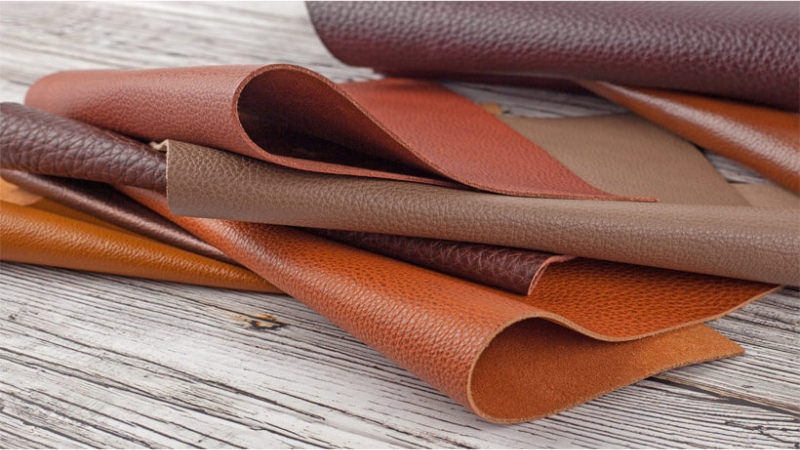 Leather is real leather, derived from animal skin[/caption]
Leather is real leather, derived from animal skin[/caption]
2. Advantages and disadvantages of leather material
Leather has outstanding advantages and some limitations as follows:
2.1. Advantages
- High durability, long-term use: Famous for their wear resistance, making them an ideal choice for products that are used frequently.
- High aesthetics, bringing luxury and elegance: Leather brings timeless beauty, creating sophistication and class for the user.
- Good water resistance: Natural water resistance helps protect items from weather effects.
- Breathable, creating a comfortable feeling for the user: the material has the ability to circulate air, bringing a comfortable feeling even when used for a long time.
- Easy to clean and maintain: Leather is relatively easy to clean and maintain, helping to prolong the life of the product.
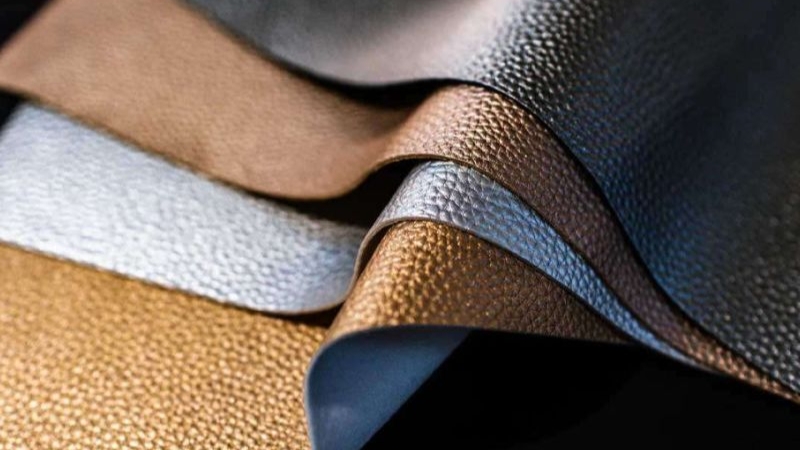 Leather has good water resistance[/caption]
Leather has good water resistance[/caption]
2.2. Disadvantages
- Higher cost compared to other materials: Leather production process is complicated, requires high technology, leading to quite expensive product prices.
- Difficult to maintain: Leather requires careful and special maintenance to avoid drying out, cracking or fading.
- Easily affected by high temperature and humidity: High temperature and humidity can cause leather to deform, losing its natural beauty.
 The price of Leather is quite high[/caption]
The price of Leather is quite high[/caption]
3. Popular types of leather
Distinguishing the types of leather on the market today will help consumers choose products that suit their needs and budget.
3.1. Genuine leather
Genuine leather is a premium material widely used in fashion, furniture, and handicrafts. Here are the common types of genuine leather:3.1.1. Full Grain Leather
Full Grain Leather is the highest quality leather, taken from the top layer of the skin, keeping its natural characteristics intact. The natural leather surface, without abrasion, possesses superior durability and good water resistance.
The biggest advantage is the unique beauty of natural leather grain, the more you use it, the more beautiful it becomes. The only disadvantage is that the price is higher than other types of leather.
[caption id="attachment_6667" align="aligncenter" width="800"]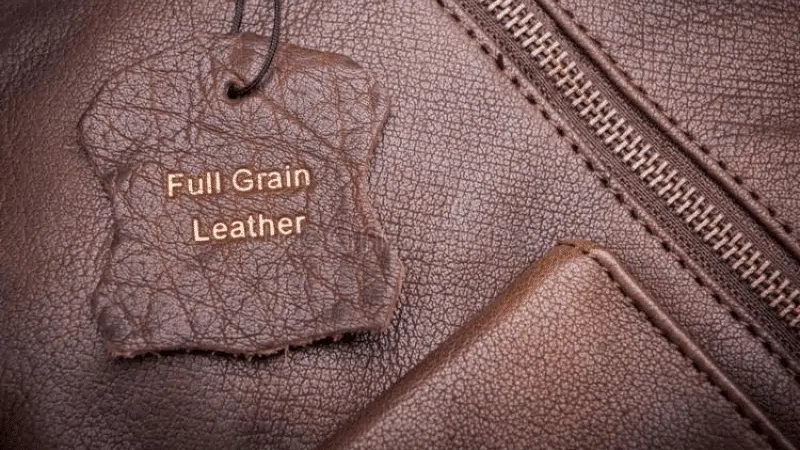 Full Grain Leather is known as the highest quality leather[/caption]
Full Grain Leather is known as the highest quality leather[/caption]
3.1.2. Top Grain Leather
Top Grain Leather is the second layer of leather, taken from the remaining leather after separating the Full Grain Leather layer. The leather surface is processed and abraded to remove defects, creating uniformity and softness. The advantage is that the leather is cheaper than Full Grain Leather. However, the durability is also lower.
[caption id="attachment_6668" align="aligncenter" width="800"]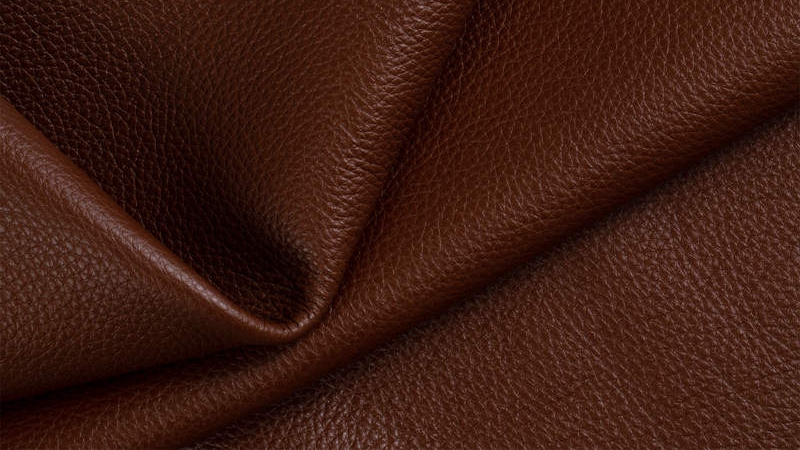 Top Grain Leather is the second layer of leather after Full Grain Leather[/caption]
Top Grain Leather is the second layer of leather after Full Grain Leather[/caption]
3.1.3. Genuine Leather
Genuine Leather is a general term for all types of genuine leather, including Full Grain Leather, Top Grain Leather and lower grades. Therefore, the durability, appearance and price of Genuine Leather depends on the grade of leather used.
[caption id="attachment_6669" align="aligncenter" width="800"]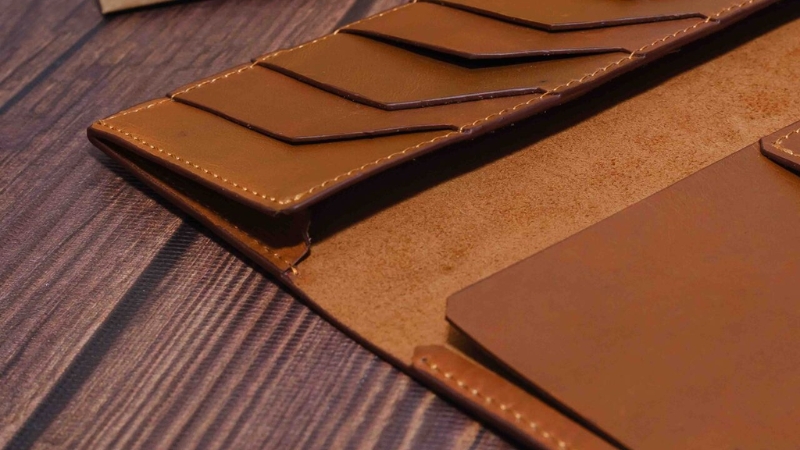 Genuine Leather layer has high durability[/caption]
Genuine Leather layer has high durability[/caption]
3.1.4. Bonded leather
Bonded leather is made from finely ground genuine leather fibers, mixed with resin and pressed together. The leather surface is uneven and less durable than other types of genuine leather. The biggest advantage is low cost, suitable for mass production.
[caption id="attachment_6670" align="aligncenter" width="800"]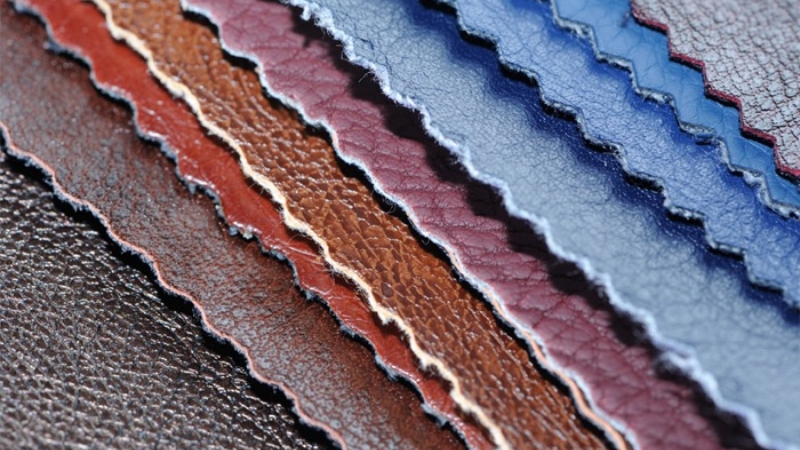 Bonded leather is relatively cheap[/caption]
Bonded leather is relatively cheap[/caption]
3.1.5. Patent Leather
Patent Leather is a type of leather covered with a layer of glossy paint, creating a shiny, eye-catching, easy-to-clean surface. Patent Leather is also very water-resistant. However, this type of leather is easily scratched during use.
[caption id="attachment_6671" align="aligncenter" width="800"]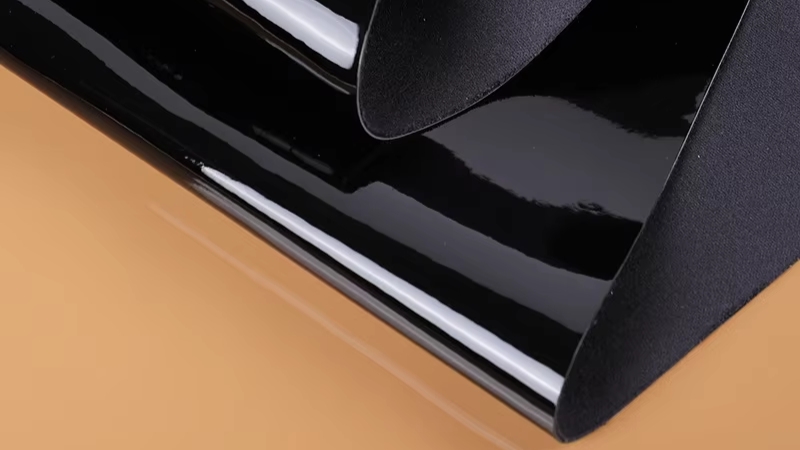 Patent Leather is a shiny layer of leather that is water resistant[/caption]
Patent Leather is a shiny layer of leather that is water resistant[/caption]
3.1.6. Pebble Grain Leather
Pebble Grain Leather is an embossed leather that creates tiny particles on the surface, making it scratch-resistant. The rough leather surface creates a classic, luxurious style. However, cleaning this type of leather is somewhat more difficult.
[caption id="attachment_6672" align="aligncenter" width="800"]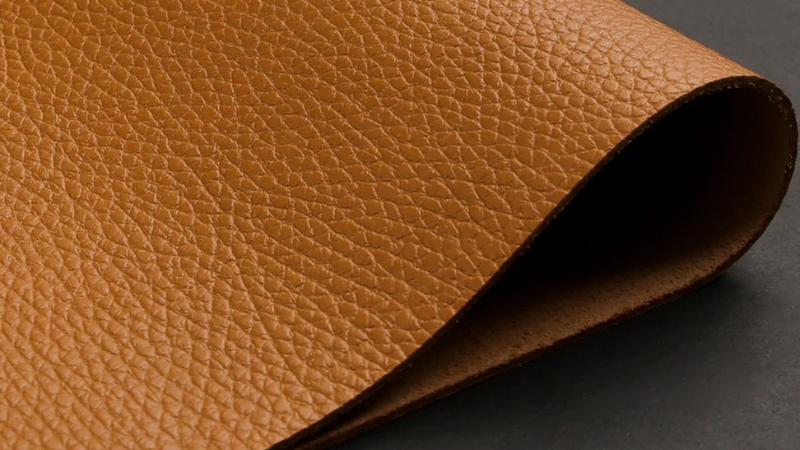 Pebble Grain Leather is quite difficult to clean[/caption]
Pebble Grain Leather is quite difficult to clean[/caption]
3.1.7. Suede Leather
Suede Leather is a type of leather made from the underside of animal skin, with a soft, velvet-like surface. The advantage is that it feels comfortable to the touch. However, Suede Leather is susceptible to dust and water, requiring careful maintenance.
[caption id="attachment_6673" align="aligncenter" width="800"]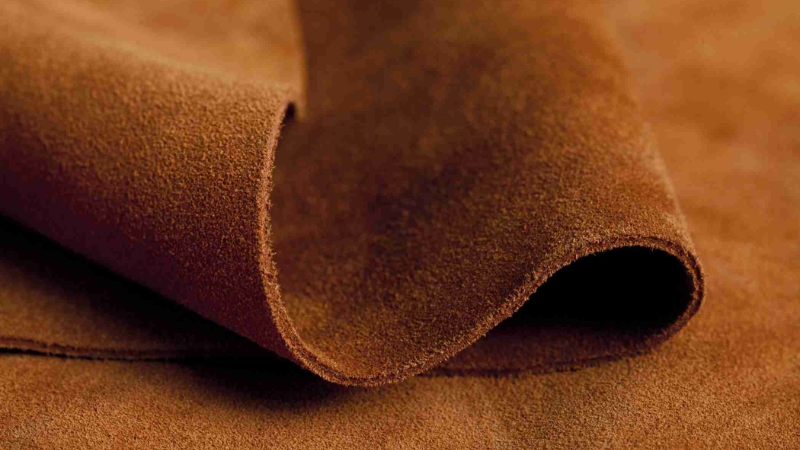 Suede Leather is easy to collect dust[/caption]
Suede Leather is easy to collect dust[/caption]
3.2. Imitation leather
Faux leather (or synthetic leather) is widely used as an alternative to genuine leather, with the advantages of low cost, easy production and environmental friendliness. Below are the most common types of faux leather:3.2.1. PU Leather
PU Leather is a type of imitation leather created by covering the fabric surface with a layer of Polyurethane plastic. This type of leather has a structure quite similar to real leather, a soft surface, high durability, and good water resistance.
The advantages are low price, variety of colors, easy to clean. The disadvantage is that the breathability is less than real leather.
[caption id="attachment_6674" align="aligncenter" width="800"] The breathability of PU Leather is less than that of real leather[/caption]
The breathability of PU Leather is less than that of real leather[/caption]
3.2.2. Faux Leather (Simili)
Faux Leather (Simili) is a type of fake leather made from PVC (Polyvinyl chloride) - a cheap and popular plastic. Faux Leather is often shinier and harder than real leather, has good water resistance, and is cheap. However, the durability and lifespan of Faux Leather is low.
[caption id="attachment_6675" align="aligncenter" width="800"]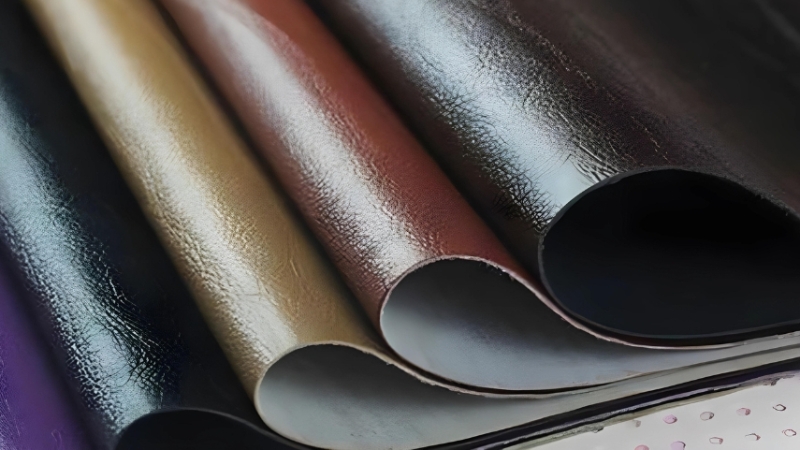 Faux Leather made from PVC is popular on the market[/caption]
Faux Leather made from PVC is popular on the market[/caption]
3.2.3. Synthetic Leather
Synthetic Leather is a type of artificial leather, including PU Leather, Faux Leather. In general, this type of leather is cheap, easy to clean and maintain.
[caption id="attachment_6676" align="aligncenter" width="800"] Synthetic Leather is relatively cheap[/caption]
Synthetic Leather is relatively cheap[/caption]
3.2.4. Microfiber leather
Microfiber leather is a high-quality imitation leather, made from super-small microfiber fibers, with a structure similar to real leather. The advantages are soft leather surface, high durability, good water resistance and breathability. However, the price is quite high compared to other types of imitation leather.
[caption id="attachment_6677" align="aligncenter" width="800"]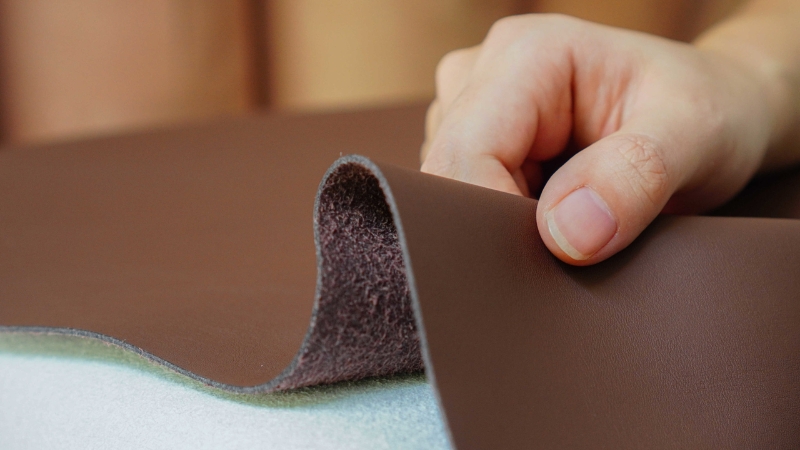 Microfiber leather is highly water resistant[/caption]
Microfiber leather is highly water resistant[/caption]
4. Diverse applications of leather in life
Possessing outstanding advantages, leather is widely used in many areas of life, from fashion, interior to household items and accessories.
4.1. In the fashion industry
Leather is a popular material in the fashion industry, especially in the high-end segment, bringing luxury, sophistication and class to the user. From shoes, handbags, wallets, belts to jackets, leather pants, leather has affirmed its leading position in terms of aesthetics and durability.
[caption id="attachment_6678" align="aligncenter" width="800"]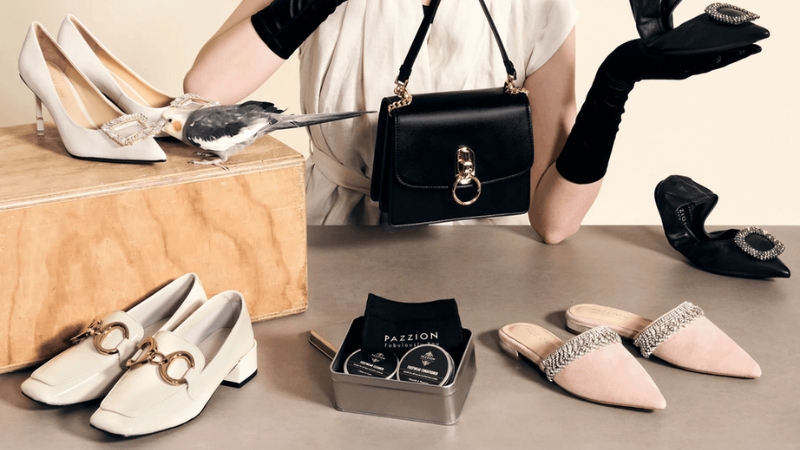 Leather applications in the production of shoes, sandals, handbags,...[/caption]
Leather applications in the production of shoes, sandals, handbags,...[/caption]
4.2. In other areas
Besides fashion, leather is also widely used in many other fields.
- In interior design, leather sofas, leather chairs, leather dining tables and chairs are always the top choice for luxurious and classy spaces.
- Leather car seats and leather car interiors bring comfort and aesthetics to users.
- Producing household items such as trays, coasters, leather rugs,... and accessories such as watch straps, phone cases,...
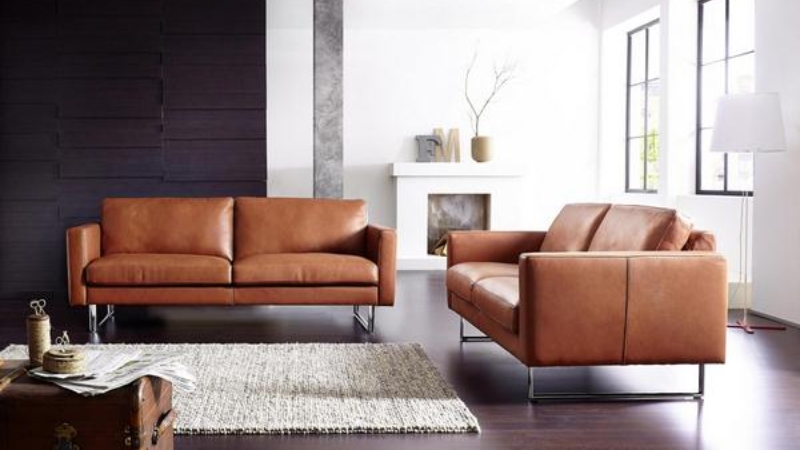 The sofa is made of leather[/caption]
The sofa is made of leather[/caption]
5. How to preserve leather products
Proper storage is an important factor in prolonging the life and preserving the beauty of leather products.
- Cleaning: Use a soft cloth and a specialized cleaning solution to clean leather. Avoid strong chemicals, which can cause fading or damage to the leather.
- Storage: Store the product in a cool, dry place, away from direct sunlight and high temperatures. Humid places make leather moldy, high temperatures make leather dry and cracked.
- Special care: Use leather polish and lotion. This will keep the leather soft and shiny.
- Note when using: Limit direct contact with water for long periods of time. When the product gets wet, wipe it dry with a soft cloth and let it dry naturally.
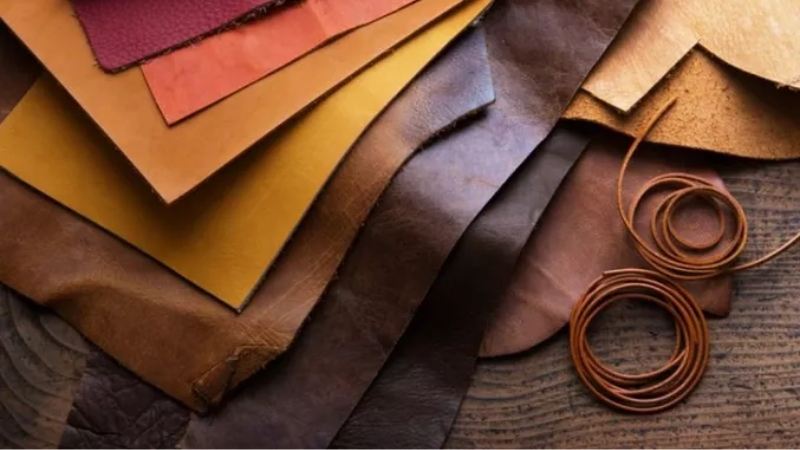 Store leather in a cool, dry place[/caption]
Store leather in a cool, dry place[/caption]
6. Related questions
6.1. Is using leather products out of fashion?
This material is trendy and never goes out of style. The luxurious, sophisticated and classy beauty of leather always has its own appeal. Moreover, leather is easy to combine with many different fashion styles, from classic, elegant to modern and individual.
6.2. Is leather expensive?
Depending on the material, durability and brand, the price of leather will fluctuate at many different prices. Genuine leather, especially Full Grain Leather, is often more expensive than imitation leather. However, the superior durability and luxurious beauty of genuine leather are worth the price you pay.
[caption id="attachment_6681" align="aligncenter" width="800"]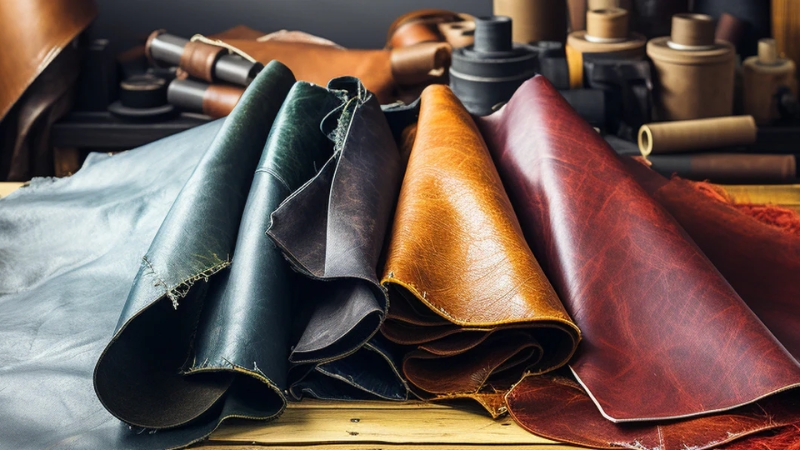 The price of leather depends on the material, durability and brand you choose[/caption]
The price of leather depends on the material, durability and brand you choose[/caption]
Hopefully the above article has given you an overview of what leather is as well as the advantages and disadvantages of this fabric. Hopefully with the above information, Shondo has helped you easily choose leather products that suit your needs and style.
Related Articles

Nếu bạn đã và đang sở hữu cho mình đôi giày ballet sneaker nhưng vẫn chưa biết outfit nào phù hợp. Xem ngay bài viết này với 5 cách phối đồ với giày ballet sneaker đẹp không có điểm trừ cùng Shondo...

Squid Game 3 chính thức khuấy đảo trên màn ảnh, bạn đã sẵn sàng ngồi liền 6 tập để xem cuộc chiến sinh tồn lần cuối của Gi-Hun chưa? Dưới đây là combo cuối tuần “chuẩn sinh tồn hiện đại” mà Shondo ...

Phong cách Retro là gì mà được nhiều người săn đón như vậy? Cùng Shondo tìm hiểu qua bài viết sau đây để biết thêm nhiều điều thú vị từ điểm đặc trưng cho đến cách phối đồ như thế nào là chuẩn nhé....

Một trong những trào lưu nổi bật gây sốt trên các cộng đồng yêu thời trang chính là phong cách Maillard. Nhưng điều gì khiến chúng lại có sức hút lớn đến như vậy? Shondo sẽ giúp bạn hiểu rõ hơn về...

Áo Polo nữ - item nghe thì tưởng già nhưng thực ra lại đang quay trở lại mạnh mẽ. Từ sân golf đến sân trường, từ văn phòng đến quán cafe, chiếc áo đơn giản với cổ bẻ đặc trưng này bỗng trở nên đa n...
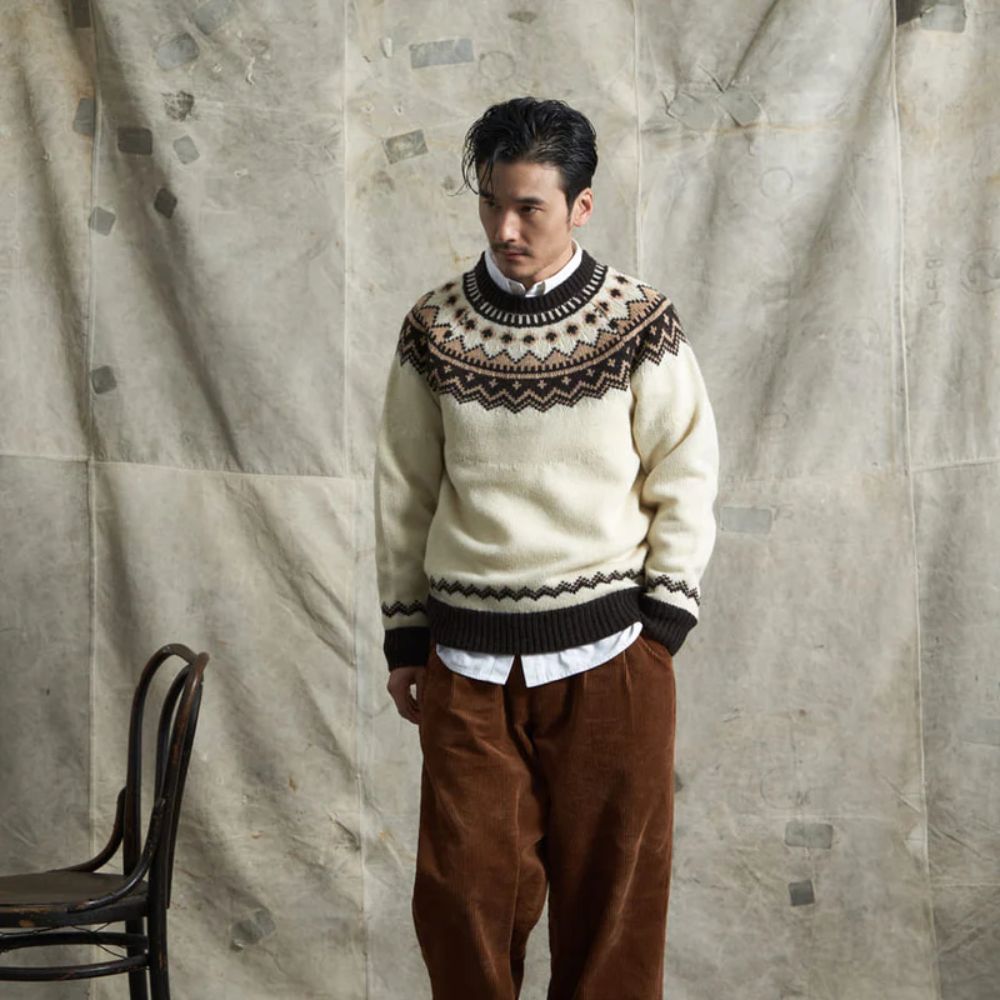
Phối đồ Vintage trong giới thời trang mang đến những nét độc đáo rất riêng. Phong cách này trở thành xu hướng phổ biến không chỉ ở nữ mà còn xuất hiện nhiều ở nam giới. Shondo sẽ cho bạn thấy điều ...
